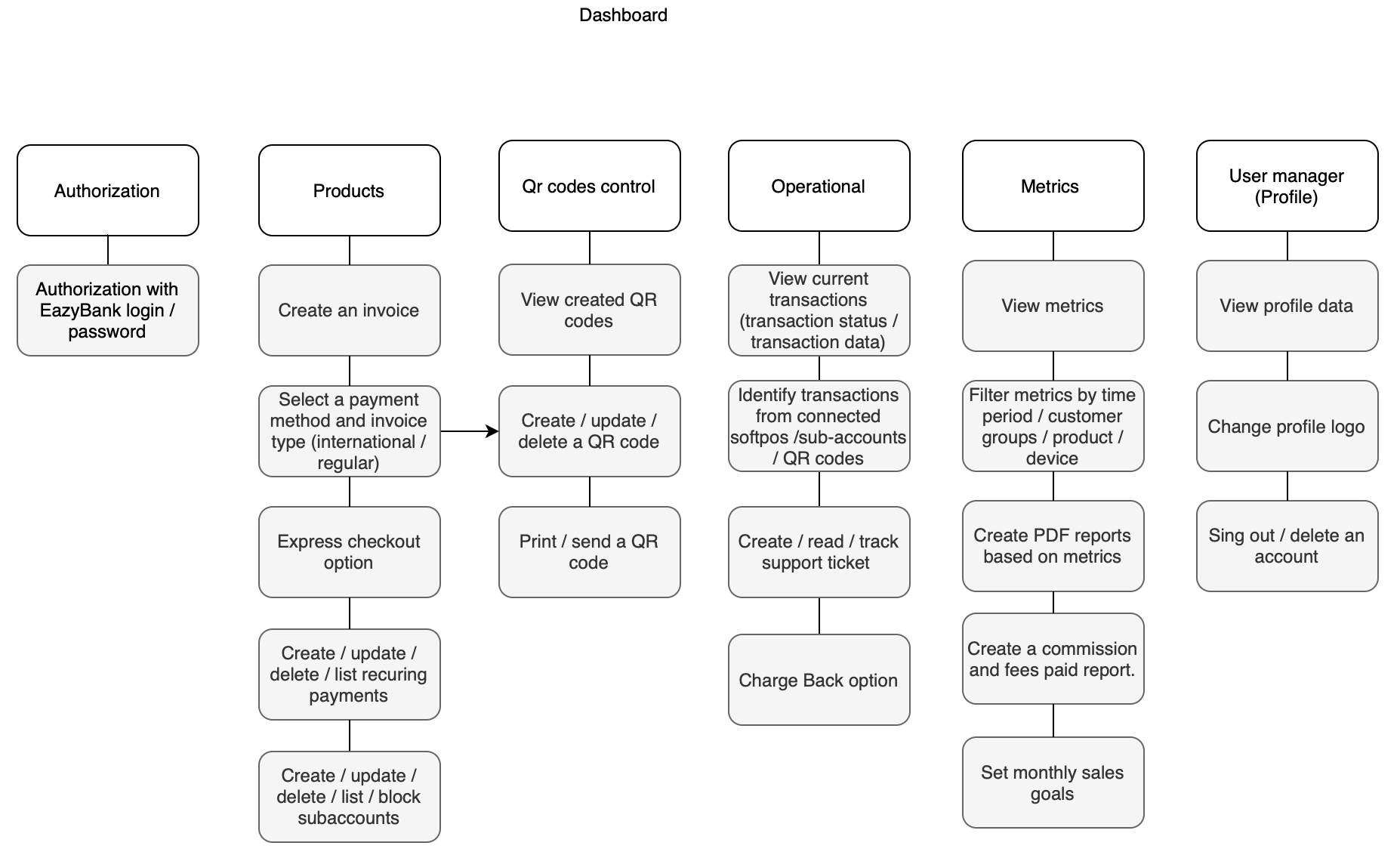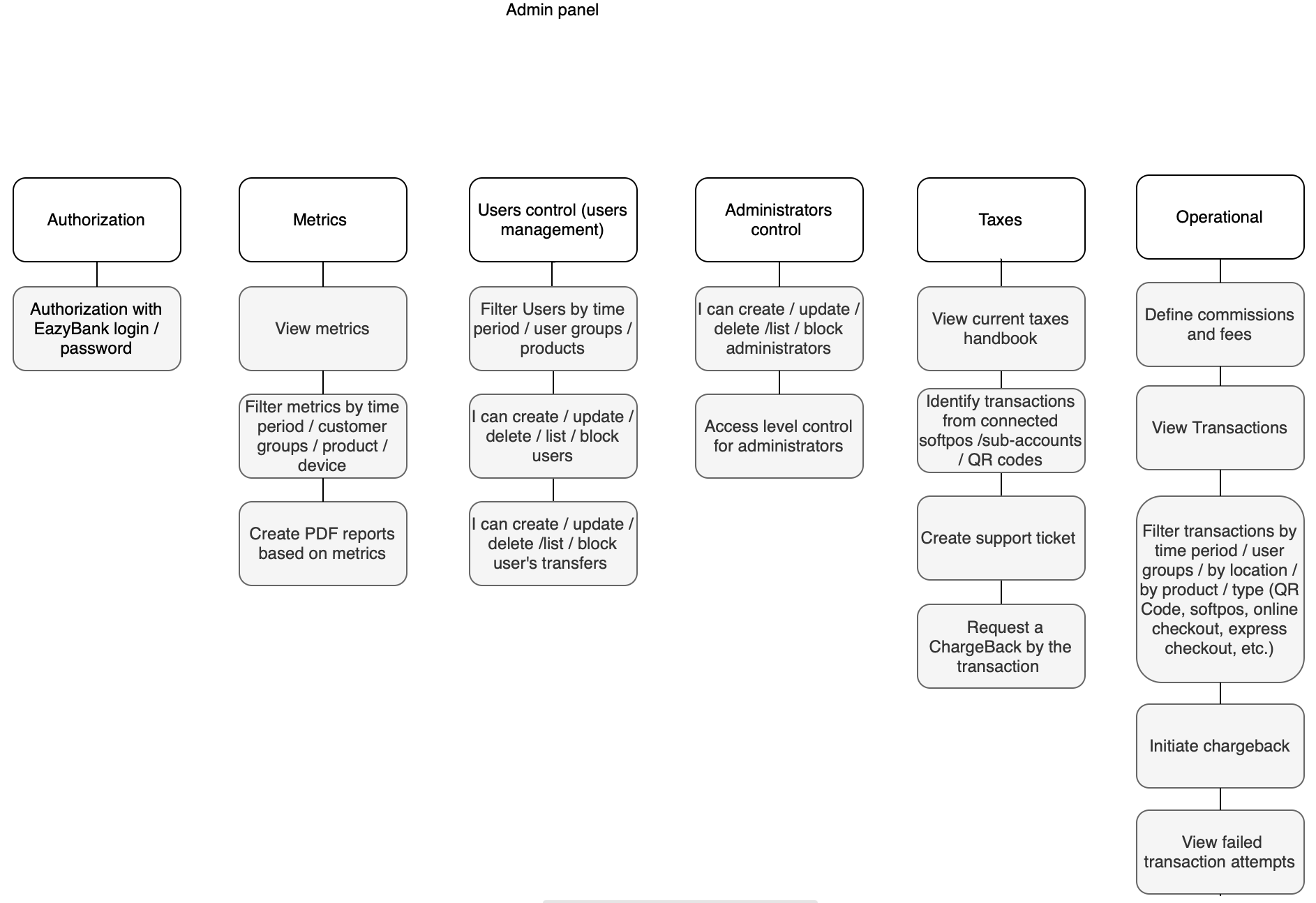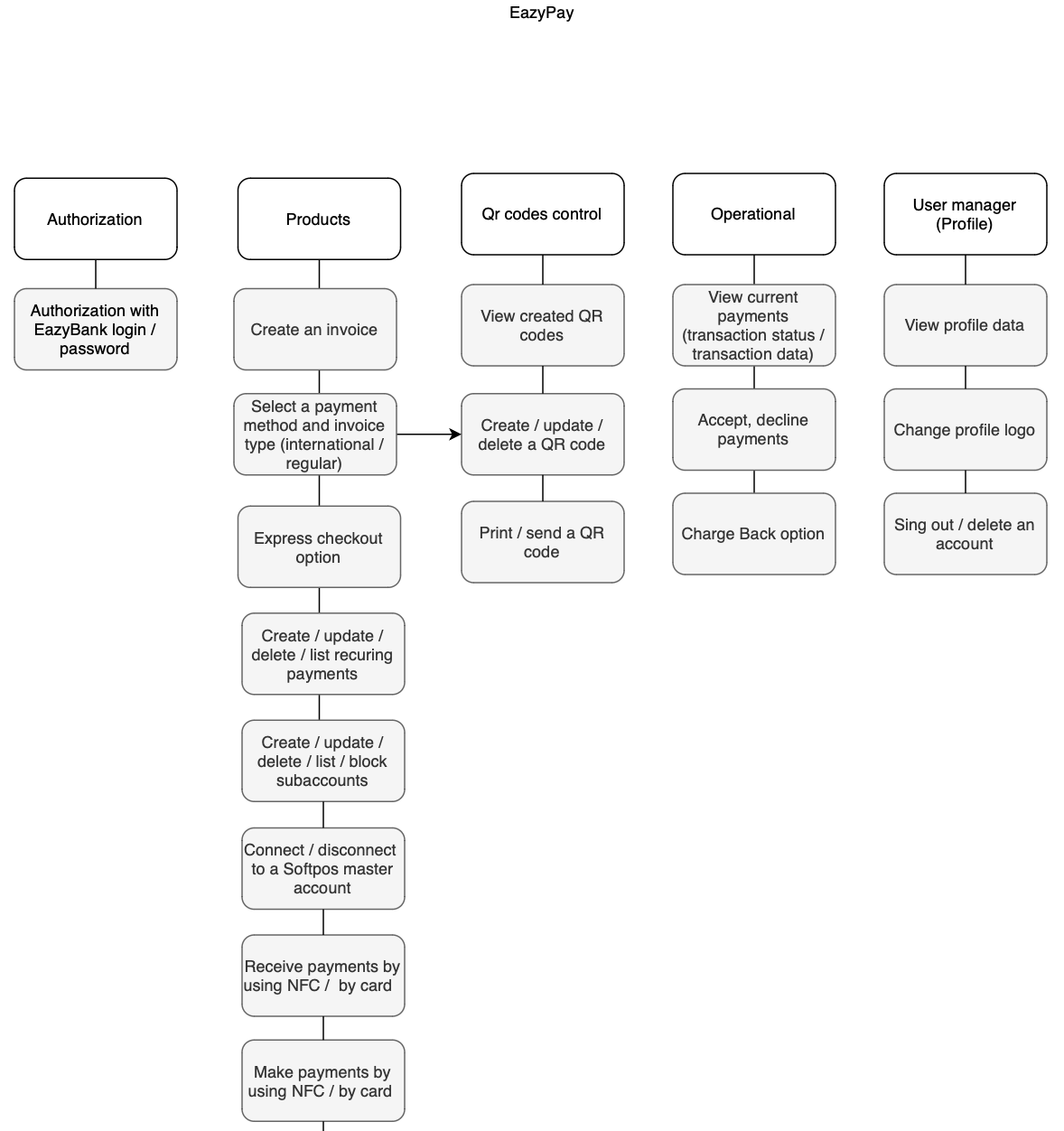Free Analytics for a Startup: How We Turned an Idea into a Fintech Product
Determining the starting point and what the final product will look like is one of the most challenging tasks in any project. However, no one wants to spend money without knowing if the idea is feasible. To address this issue, we offer free consultations.
These consultations are not just a quick phone call. After several discussions and a few days of our work, you will have a clear understanding of the final product, the development cost, and how the target audience will use it. And it’s completely free for you.
In this article, we provide details and examples of our work during these free consultations.
What the Customer Had in Mind
Customer: EazyBank, a developer of banking apps. The customer approached us with an idea for a startup called EazyBank. They wanted to create a payment method that would allow entrepreneurs to settle transactions using their credit cards. Smartphones would serve as an end-user device.
The customer did not have any terms of reference. They presented us with a set of ideas and product requirements. However, it was enough to start working on the project.
What We Did
Startup companies often approach us with loosely defined ideas. In such projects, the customer has many ideas and views of the final app. Our role is to provide solutions to implement these ideas and narrow down the customer’s suggestions. Some features may not be as necessary as they initially seem, and some can be implemented later once it becomes clear that there is real demand for the app.
A startup cannot be launched without understanding its potential. For this purpose, we provide basic analytical data as part of our free consultation.
With EazyBank, we developed and delivered three documents as part of our consultation: Project Vision, Project Estimate and User Story Map.
Project Vision. This document provides a comprehensive yet concise description of the project concept and customer value, as well as the look and feel of the project to the developers. It also outlines the problems the project aims to solve or the goals it aims to achieve.
After signing a contract with the customer, the Project Vision serves as the basis for developing business rules, which is the most important document required for development.

Оглавление Vision
Project Estimate. The more accurately the customer describes their requirements, the more accurate our project estimate will be. If the customer does not provide clear requirements, we base our estimate on the Project Vision. The first step is to decompose the project. It means dividing the project into certain operations and estimating working hours for each task.
There are two types of estimates: Range and Cost. Range is a pre-project estimate. Figures are approximate here; they incorporate more risks. The cost estimate is prepared once the project is approved, and all necessary technical documents are finalized. Such documents can be used to make more accurate estimate of time and money costs to implement the idea. It also covers some risks.
In this project, the customer did not provide any formalized requirements, so we incorporated more risks in the estimate. However, we were able to decompose the project and provide an approximate estimate based on the Project Vision.

Approximate estimate (Range) for the EazyBank project. Based on our estimate, the project requires 1,640 to 2,900 working hours which will cost $65,600 to $116,000 for the customer
We also emphasized some milestones for the customer in our estimate. For instance, we mentioned that implementing the app on iOS would be more challenging because the developers have no access to NFC which is necessary for card payments. This feature can only be implemented using Apple-approved acquiring services or through direct arrangements with Apple.
We already faced this problem and mostly avoided using iOS devices. It is much simpler to use a designated Android device for processing payments at the point of sale.
User Story Map. This document describes:
- User Persona. The kind of person who would use the product, their needs and problems.
- Goals of the user interested in the product. Usually, the stories are compiled using a simple “Role – Desire – Benefit” scenario.
- User experience with the product. Emotions the user may experience, their expectations, sequence of actions, etc.
The User Story Map tells the user’s story: who they were and who they are now, their goals, and the challenges they face.



What the Customer Got
After free consultation, the customer got a detailed and documented description of their project.
The Project Vision provides a comprehensive description of features, goals and product requirements, while the User Story Map describes the image and needs of potential users.
These documents are supported by the cost estimate of project development. Now the customer knows which features they need in the app and the cost of development.
The customer will retain these documents. The customer saved money by not being bound to a partnership agreement with us.
Do you have an idea for a startup but don’t know how to bring it to life? Sign up for a free consultation, and we will work on it together.